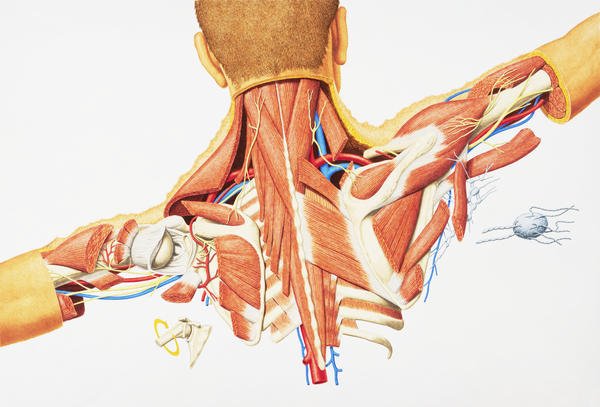Shoulder Fundamentals
Frozen Shoulder… Shoulder Impingement… Torn Rotator Cuff… Torn Biceps Tendon… Tennis Elbow… Golfer’s Elbow… Bursitis…
There are many injuries that can occur from shoulder imbalances… and not just from sports.
DID YOU KNOW THAT THERE ARE 5 JOINTS THAT MAKE UP YOUR SHOULDER?
There are three true shoulder joints and two functional articulations:
True Joints:
Sternochondral-Costoclavicular Joint (SCCC)
Acromioclavicular Joint (AC)
Glenohumeral Joint (GH)
Functional Articulations:
Subdeltoid Joint - Space below the acromion process that contains the subdeltoid bursa and accommodates the expansion of the supraspinatus muscle to descend the head of the humerus in the beginning phase of abduction (flexion)
Scapulothoracic Joint - Loose connective tissue between the subscapularis and serrates anterior muscles that allow gliding of the scapula on the thoracic cage
IS THE GLENOHUMERAL JOINT (BALL-IN-SOCKET) THE MOST IMPORTANT JOINT TO FOCUS ON?
No.
Many people think that it is the Glenohumeral Joint that is the most important, when in fact, all of these structures together comprise a functional unit - and the free mobility in all the joints is necessary to achieve full range of motion.
The first joint to look at to help shoulder function is actually the SCCC Joint. Compression or limitation at this joint will often decrease the circumduction at the distal end of the clavicle which is normally up to 30˚
The other very important joint to look at is the Scapulothoracic Joint. For example, if the scapula is not able to slide properly or is not able to fully retract into frontalisation due to long, weak rhomboid major muscle, then it can limit the ability for the humerus to move freely.
Often with an overuse injury… it is not necessarily where the pain occurs that indicates the origin of the problem.
So, if you have a rotator cuff injury that continues to be problematic, perhaps ELDOA METHOD could help you discover a more productive approach to healing your shoulder. We look at the shoulder complex globally and use many tools including specific reinforcement, myofascial stretching, global postural stretching, and ELDOA exercises to help bring balance to all 5 joints of the shoulder.


